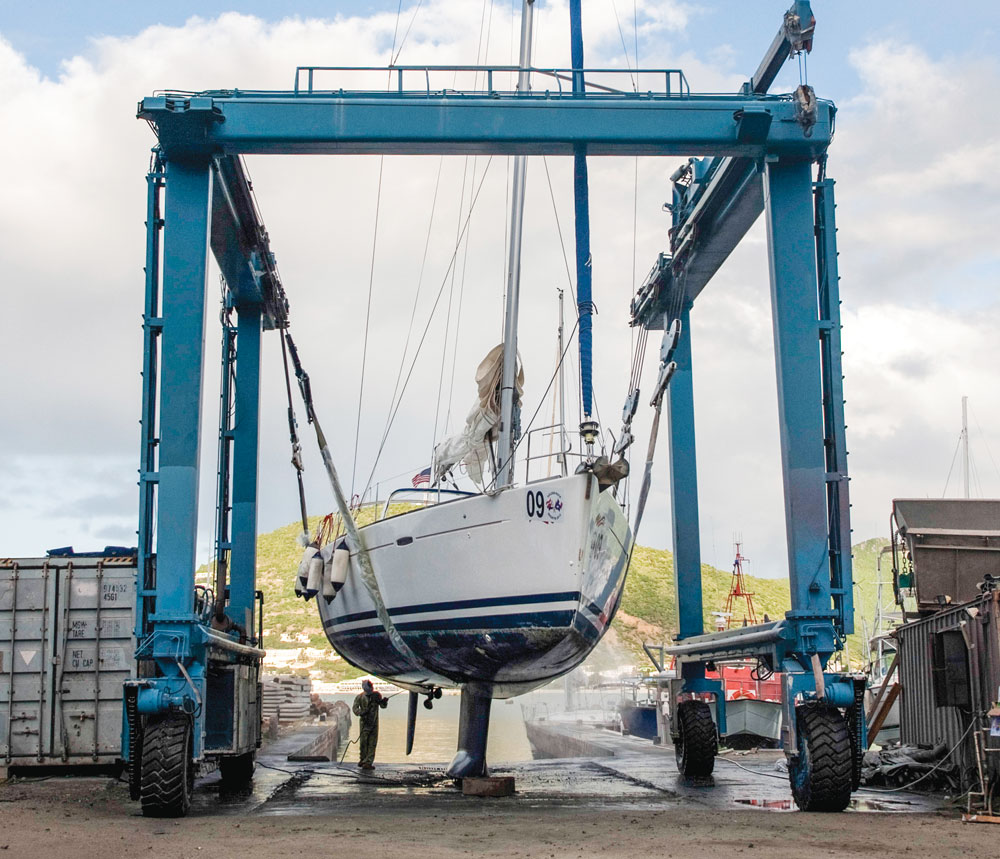Guide to fitting out
Get your boat in shape for the sailing season to maximize your time on the water
There is nothing worse than wasting precious time fixing things when you could be sailing. That’s why it makes sense to spend extra time before launch day, or before the best sailing of the year for those who don’t haul boats and sail year round, making sure that everything is shipshape.

Check your gear, finish up ongoing projects, take care of annual routine maintenance, maybe make a few upgrades along the way. Fitting out might seem like a lot of time in the boatyard, but it’s really about guaranteeing time on the water later.
Down below
This is prime time for engine maintenance. Start by checking over the entire engine, making sure engine bolts are properly tightened and wiping it down where it’s accessible.
If the engine oil and filter weren’t changed in fall, do that now.
Secondary engine-mounted fuel filters don’t get dirty but they do get old so check them and replace if necessary.
Changing the impeller once a year is a good habit to get into. Impellers typically last longer than a year but when they fail they disintegrate, leaving you pulling rubber bits out of the heat exchanger, so it’s an investment in your time to replace it early and often.
Double check your supply of engine spares. Engine oil, fuel and oil filters, and impeller and spare belts are all good to have on hand.
Check battery cables to make sure they are correctly attached.
Clean the bilge thoroughly to avoid mold or mildew from forming and to get a better look for cracks. Pay close attention to the keel bolts, looking for cracks or checking them with a torque wrench.
Do a deep clean on everything you can, from the fridge to the oven, and maybe go through that stuffed nav desk to see if you really need charts from places you don’t plan to sail again soon.
Check and replenish the supply of spares, including light bulbs, cotter pins, stainless screws and more. Do you have enough tools and parts on board to fix most things that would need attention before you could get to a dock?
Check the rig
Most owners don’t take the opportunity to check the rig regularly, so a thorough check at the beginning of the season is essential.

Check sheaves for uneven wear.
Check spreaders to make sure they are secure.
Examine shrouds for rust, broken wires or other damage. Pay particular attention to cable terminals to make sure there is no rust developing.
Check chainplates for rust, water intrusion on deck or down below and to ensure that shrouds are properly pinned and taped.
Tuning the rig is not only important for performance but also for safety and it’s good to do anytime the mast has been unstepped. Start by making sure the mast is centered in the boat by using a 100-foot tape measure hoisted to the masthead to measure the distance to rail outside the shrouds on both sides of the boat. Use the turnbuckles to adjust the tip of the mast.
It’s a good idea to also check the rig while sailing to make sure it is in column. You may have to adjust diagonals to get the tuning right.
Replace light bulbs in navigation lighting if needed. If the rig is out of the boat you may want to do it regardless and it’s much easier standing on dry land.
Running rigging should be examined for spots with wear on the cover and to make sure that splices are in good shape and not showing signs of beginning to fail. You can wash stinky saltwater coated lines with a very mild detergent if a freshwater rinse doesn’t do the trick. This can be done by hand or in a washing machine but tightly coiling the line and putting it in a pillowcase and running the machine on a gentle cycle.

Comments